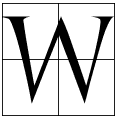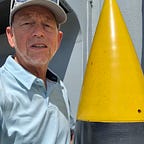Blunders and Critical Errors During the Pearl Harbor Attack
Japan’s victory at Pearl Harbor wasn’t as great as historians think
 While most historians consider the surprise attack by the Imperial Japanese Navy on December 7, 1941 to be almost perfect, there were some serious errors by the Japanese that allowed America to get back in action months after the attack. For its part, America had several opportunities for early detection of the Japanese attack but squandered them away by poor communication and lax readiness.
While most historians consider the surprise attack by the Imperial Japanese Navy on December 7, 1941 to be almost perfect, there were some serious errors by the Japanese that allowed America to get back in action months after the attack. For its part, America had several opportunities for early detection of the Japanese attack but squandered them away by poor communication and lax readiness.
Choice of commander
The choice of Admiral Chuichi Nagumo to lead such a risky and audacious attack was at the outset questionable. Although Nagumo was very senior within the ranks of the Japanese Navy, as an expert in destroyer and torpedo tactics, he was only vaguely familiar with naval aviation.
It was surprising that Admiral Yamamoto who planned and designed the attack would put Nagumo in charge. Nagumo was strongly against the use of aviation to attack America and preferred a ship-to-ship shootout with the US Navy as envisioned in many of the Japanese war plans. It seems his seniority was the primary reason he was selected.
Admiral Nagumo was a sensible and cautious officer who was seen by the younger more aggressive naval aviators as a senior father figure. His overly cautious nature put him at odds with Admiral Yamamoto who was a known gambler and risk taker. Nagumo’s conservative decisions would haunt him later in the war for the shortcomings of the Pearl Harbor attack and the loss of four Japanese carriers later at the battle of Midway.
Use of midget subs
While most people remember the attack at Pearl Harbor to be an aviation event, the Japanese Navy dispatched five of their new secret weapons: 78 foot mini-submarines with a crew of two carrying two torpedoes. The midget subs were able to operate in the shallow waters of Pearl Harbor where a conventional submarine could not venture.
The plan was for these mini-subs to be launched by large submarines outside the area and arrive in the harbor under the cover of darkness. They were to enter the harbor and move into firing position prior to the arrival of the planes overhead at 8 am. The plan called for them to remain underwater until the attack began. They were to surface and fire their torpedoes at close range to double the effectiveness of the torpedo bombers from above.
Despite the advantages the mini-submarines offered, several key Japanese aviation planners including Mitsuo Fuchida were against their use in the attack. His main concern was the possibility of discovery and loss of the element of surprise. The entire operation could be jeopardized by these craft.
This is indeed what happened as the minesweeper the USS Condor spied a periscope in the water at 3:52 am. The destroyer USS Ward responded to investigate the incident. She received an additional report from yet another US vessel of a periscope. She attacked with her 5" guns and depth charges, firing the first shots by the US in WWII. The Ward sank the midget sub and the USS Monaghan sank another.
Alerts were sent to the naval HQ in Honolulu that active attacks were underway a full hour before the arrival of the Japanese carrier planes. Unfortunately, the warning did not reach the commanding officer this Sunday morning.
Fuchida’s nightmare had come true but due to ineffective American communications, no general alarms were called. The first wave of Japanese carrier planes arrived in total surprise.
Of the five minisubs, three were sunk or damaged by US destroyers, one had internal problems which caused it to surface and get stranded in the surf, one of its crew captured as the first POW of the war. One sub remained unaccounted for. It is unclear if any subs had fired their torpedoes.
The Japanese mini-subs added little to the overall attack except alerting the US Navy.
Use of floatplanes from the Tone and Chikama
At 5:30 am on December 7, 1941 Admiral Nagumo needed the latest info on the position of the US ships at anchorage. He ordered a launch of the float planes from the cruisers Tone and Chikama with instructions to report on the ships found at Pearl Harbor and Lahaina. The planes arrived overhead at 7:05 am about an hour before the attack and reported on the US ships at battleship row and Lahaina.
Using scout planes before the attack again demonstrated Nagumo’s extreme caution as in the Japanese adage “tap a stone bridge before crossing”.
The flights were tracked by three US radar installations and forwarded to the duty officer. As the shift changed shortly after 7 am, the NCO in charge unknowingly wiped them off the board without comment and closed the facility down. Another missed opportunity for the US for early detection.
Missed the fuel depot, dry docks, and submarine base
The two waves of Japanese fighters effectively neutralized the US Army’s response by destroying most of the American fighter interceptors on the ground at Hickam and other airfields. The Japanese dive bombers, level bombers and torpedo bombers all were effective in damaging and sinking the US battleships lined up along battleship row.
Interestingly, since the harbor was so shallow most of the ships were relatively easily recovered and reentered service in the months following the Pearl Harbor attack. Only the Arizona remained on the bottom at Pearl.
While the Japanese naval flyers concentrated their attack on the ships at Ford Island, they neglected to bomb the extensive oil tank depot that surrounded Pearl Harbor. The tanks held 4.5 million gallons of oil, a full year of fuel for the fleet. Had it been attacked and lost, the fleet would have had no choice except to vacate Hawaii and head to San Diego. Most naval historians agreed with Admiral Nimitz who suggested it would have added another year to the war in the Pacific.
The drydock facilities at Pearl Harbor were expansive and capable of attending to the needs of any ship in the US fleet that needed field repair. Featuring welding crews, machine shops facilities and metal shops all located within yards of the docks, these facilities were fully staffed and suffered no damage in the attack. They were immediately able to spring into action to begin the salvage and repair operations.
The main Pacific submarine base was at Pearl Harbor. It received little attention and damage during the attack. The subs docked at port were directly attacked with bombs and strafed while the US subs returned fire. They shot down several Japanese planes while sustaining no damage during the attack.
The US retained a key offensive weapon in its submarine force. These subs would soon put to sea taking a large toll on Japanese cargo vessels in the future.
Underestimated the speed of the US response
The Japanese carrier pilots were surprised by the almost immediate and increasingly ferocious US response once the attack was underway. One pilot stated that “I was shocked at how quickly the American gunners were ready for the attack. It seemed like the American gunners had ammunition ready to go, unlike the Japanese Navy”.
In the first wave only nine Japanese planes were shot down, but in the second 20 were shot down. The Japanese suffered damage to 74 planes that returned to the carriers with 42 deemed a total loss. Of the total of 353 planes launched, 29 were shot down and 42 too damaged to return to flight, resulting in the loss of 20% of the planes in the 1st Air Group. A loss of this magnitude had an effect on Nagumo’s decision not to launch a third wave.
No third wave attack
Nagumo had no plans to launch a third wave to destroy undamaged facilities. Senior aviators Lt. Genda and Fuchida having witnessed the entire attack, implored Nagumo to reconsider. This wave could bomb the dry-docks, submarine facility and oil tank farm missed in the original attack. Nagumo asked one question” Will the American fleet be able to come out in force in the next six months?’ They answered “No, not likely but we should proceed regardless as there are many remaining targets”.
Admiral Nagumo pondered the question of a third wave and ultimately decided that it was time to retreat back to Japan. They had pushed their luck so far. They had no idea where the America carriers were, and couldn’t stay due to fuel concerns. He thought it imprudent to risk his carrier force in an extended battle.
According to Nagumo, they had accomplished all they came for.
It was Admiral Nagumo’s decision to retreat back to Japan and not launch a third wave that would set the stage for future engagements in the Coral Sea and Midway with the US Navy. The US would ultimately halt the Japanese naval offensive barely six months after Pearl Harbor and change the tide of the war.
